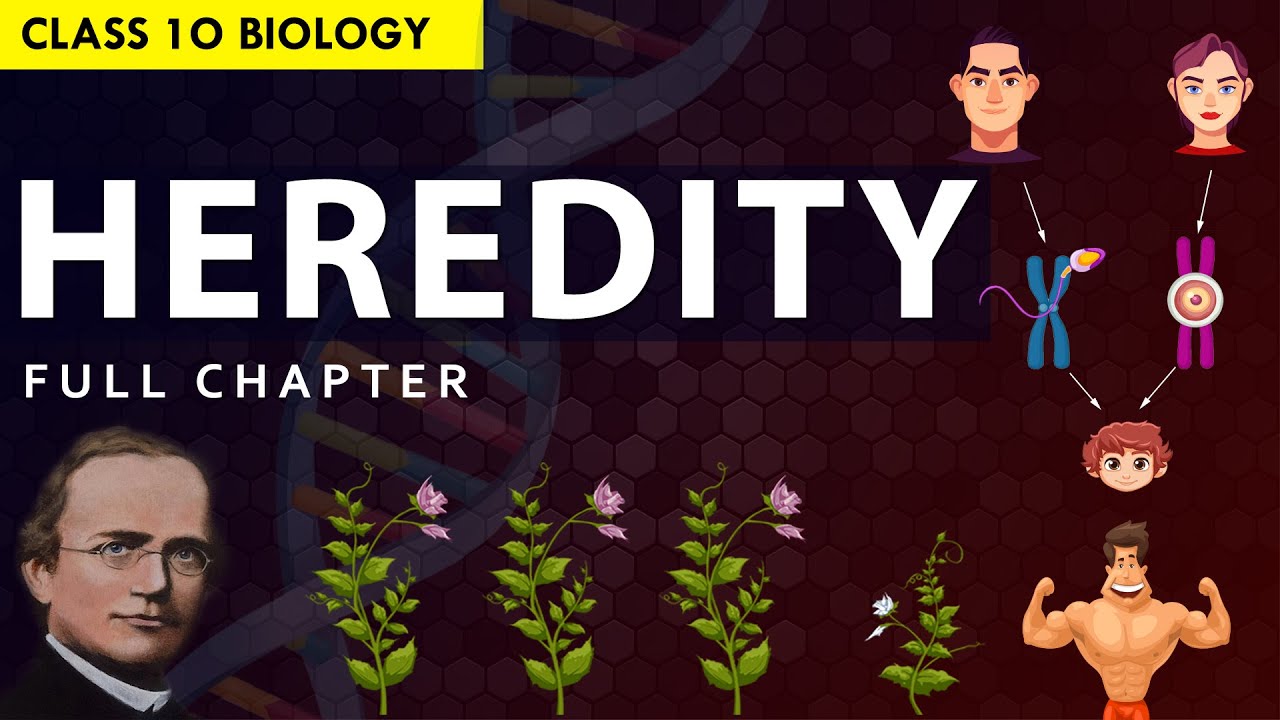Dihybrid
Summary
TLDRThis video explains Mendel's approach to understanding inheritance by exploring the combination of traits in dihybrid crosses. Using seed color (yellow vs. green) and seed shape (round vs. wrinkled) as examples, Mendel’s experiments reveal a consistent 9:3:3:1 phenotypic ratio in offspring. The explanation delves into gene segregation during meiosis, illustrating how independent assortment leads to genetic diversity. Mendel’s four postulates, particularly the law of independent assortment, are key to understanding the genetic outcomes of these crosses, showing how genes on separate chromosomes assort independently, enhancing diversity in meiosis.
Takeaways
- 😀 Mendel expanded his research by studying traits in pairs, combining all seven traits he had previously studied individually.
- 😀 He experimented with combinations of seed color (yellow vs. green) and seed shape (round vs. wrinkled), both of which follow dominant and recessive inheritance patterns.
- 😀 In his initial crosses, Mendel found that the offspring were all yellow and round, demonstrating the dominance of these traits.
- 😀 When F1 plants were crossed with each other, the F2 generation showed a distinct 9:3:3:1 ratio of phenotypes.
- 😀 The ratio of 9:16, 3:16, 3:16, and 1:16 refers to the four possible combinations of dominant and recessive traits in seed color and shape.
- 😀 The alleles involved were represented as: big Y for yellow (dominant), little y for green (recessive), big R for round (dominant), and little r for wrinkled (recessive).
- 😀 Mendel’s parental cross involved true breeding (homozygous) plants for both dominant and recessive traits.
- 😀 Gametes from the parents each contained one allele for each gene, and through fertilization, all F1 plants were heterozygous for both traits.
- 😀 Using the FOIL method, Mendel demonstrated that F1 individuals produced four types of gametes, each with equal probability.
- 😀 The resulting Punnett square showed a variety of genotypes, but phenotypically, 9/16 of the F2 generation were yellow and round, confirming the 9:3:3:1 ratio.
- 😀 Mendel's fourth postulate, the law of independent assortment, explains that alleles of different genes segregate independently during meiosis, contributing to genetic diversity.
Q & A
What was Mendel's approach after determining the inheritance rules for individual traits?
-Mendel decided to look at pairs of traits in combinations, experimenting with all seven traits in pairs to observe how they interacted together.
What traits did Mendel use in his dihybrid cross experiment?
-Mendel used seed color (yellow, dominant over green) and seed shape (round, dominant over wrinkled) in his dihybrid cross experiment.
What was the result of the F1 generation in Mendel's cross between true-breeding plants for dominant and recessive traits?
-All the F1 offspring exhibited the dominant traits, yellow round seeds, since both seed color and shape were controlled by dominant alleles.
What was the ratio observed in the F2 generation of Mendel's dihybrid cross?
-Mendel observed a 9:3:3:1 ratio in the F2 generation, where 9/16 exhibited both dominant traits (yellow, round), 3/16 showed dominant for one trait and recessive for the other, and 1/16 showed both recessive traits (green, wrinkled).
What method did Mendel use to track the alleles during his experiment?
-Mendel used a Punnett square and the FOIL method (First, Outside, Inside, Last) to determine the allele combinations in the gametes of the F1 generation.
How did Mendel's alleles for seed color and shape segregate during meiosis?
-During meiosis, the dominant and recessive alleles for seed color (Y/y) and seed shape (R/r) segregated independently, leading to the different allele combinations in the gametes.
How did Mendel use the Punnett square to determine the F2 phenotypes?
-By crossing the F1 heterozygous plants, Mendel used a Punnett square to calculate the possible genotypes and phenotypes, ultimately determining the proportions of yellow, round seeds, yellow wrinkled seeds, green round seeds, and green wrinkled seeds in the F2 generation.
What is the significance of the 9:3:3:1 ratio in Mendel's experiment?
-The 9:3:3:1 ratio supports Mendel's law of independent assortment, which states that the alleles for different traits segregate independently during meiosis.
What does Mendel's law of independent assortment state?
-Mendel's law of independent assortment states that the alleles for one gene segregate independently of the alleles for another gene during meiosis, meaning the inheritance of one trait does not affect the inheritance of another.
How does the law of independent assortment contribute to genetic diversity?
-The law of independent assortment increases genetic diversity by ensuring that different traits are inherited independently, leading to a variety of genetic combinations in offspring.
Outlines

This section is available to paid users only. Please upgrade to access this part.
Upgrade NowMindmap

This section is available to paid users only. Please upgrade to access this part.
Upgrade NowKeywords

This section is available to paid users only. Please upgrade to access this part.
Upgrade NowHighlights

This section is available to paid users only. Please upgrade to access this part.
Upgrade NowTranscripts

This section is available to paid users only. Please upgrade to access this part.
Upgrade NowBrowse More Related Video

HUKUM MENDEL: BIOLOGI KELAS 12 SMA

PEWARISAN SIFAT PADA MAHLUK HIDUP: IPA SMP KELAS 9

Hukum Pewarisan Sifat Makhluk Hidup | Hukum 1 dan 2 Mendel (Persilangan Monohibrida dan Dihibrida)

🧬 Kenapa Kita Mirip Orangtua Kita?

BAB 6 PEWARISAN SIFAT DAN BIOTEKNOLOGI Part 1 (IPA Kelas 9 Kurikulum Merdeka)

CLASS 10 HEREDITY & EVOLUTION Full chapter explanation (Animation) | NCERT Class 10 Chapter 8
5.0 / 5 (0 votes)